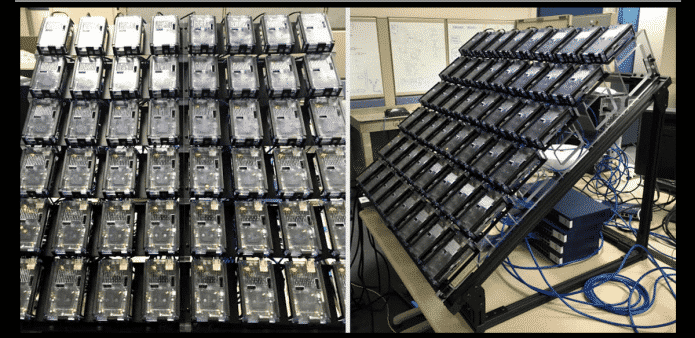Future smartphones could be powered by IBM built digital rat brain
IBM had announced in August 2014 that it had built a “brain-inspired” computer chip, which means that instead of a traditional computer, a computer was basically wired like an organic brain. These chips are created to function like the brain’s nerve cells known as neurons. The team working on the brain recently hit a new benchmark, who claimed that a system contains about 48 million digital neurons that is approximately as many as found in the brain of a rodent, as reported by Wired on August 17.
According to Dharmendra Modha, the lead researcher on the project recently speaking to Quartz recently said that he foresees the future of computing to be made out of two types of computers, traditional logical computers and synaptic brain computer. These would together function like a kind of left brain-right brain interaction to create systems that were not imaginable in the past. “Existing computers as really fast calculators,” Modha said.
Even though the current chips are extremely good in examining details in a logical order, the new “neuromorphic” types of chips that are being worked upon by Modha’s team are more appropriate in finding patterns, for example, like the right side of the brain.
The chips’s design result in more powerful chips that requires less power to run due to the communication of digital neurons over digital versions of synapses. While traditional chips follow directions or orders, IBM’s new chip manages “spikes” rather like spikes in electrical activity in an organic brain. Passing between neurons, the spikes are like a single bit of information. “Together, this creates this truly path-breaking architecture that can process sensory data in real time while consuming minimal energy in a mobile phone factor,” Modha said.
A bootcamp was held by the IBM to demonstrate the working of the chips and the method to build apps using them to the researchers, universities and government agencies. The chips need their own programming language(PDF), as they are not wired like traditional computer, the design of which is now being showcased to the world by the team. For these chips, “the old mindset would be a square peg round hole,” Modha said.
Modha’s team had way back in 2012 announced that was in the process of building a brain chip at the scale of a bee’s brain, which could play Pong in almost the same way like a human. Three years later, the team has increased the power of its brain chip to the brain of a rodent; however, there is no news if the brain chip has specialized any new videogames.
Talking about his team’s goal, Modha said that they want to build a “brain in a shoebox,” with more than 10 billion synapses that would absorb less than 1 kilowatt hour of power, which is the extremely small amount of power that the human brain needs to work (For reference, a human brain has about 100 billion synapses). He says that he thinks of this happening within a decade. He also said that a computer with the power and complexity of a human brain is still likely decades away. “The complexity and beauty of neurons in nature dwarfs the imagination,” he added.
Cognitive computing systems like IBM’s own Watson in the future are likely to fight against more and more of the innumerable torrents of data produced by the world, there will be a need for more powerful computers that can solve problems in unusual ways.
According to Wired, neuromorphic chips like Modha’s could power future versions of Siri or Google Now, where natural language processing (NLP), which is a computer’s ability to understand you when you speak to it, takes place on the device. It also does not need an internet connection to a server farm half way around the world that’s just devoted to NLP. However, this project is not yet a digital brain, which has the capacity to produce the intelligence of a rat. It’s a system that is somewhat inspired by the way a rat’s brain is wired. However, no one knows where this research could lead as it progresses.
“The best way to predict the future is to invent it,” Modha said of his work. “That’s been my mantra.”

